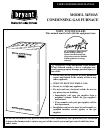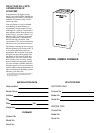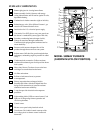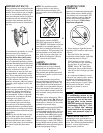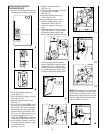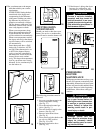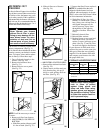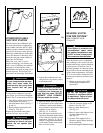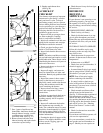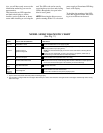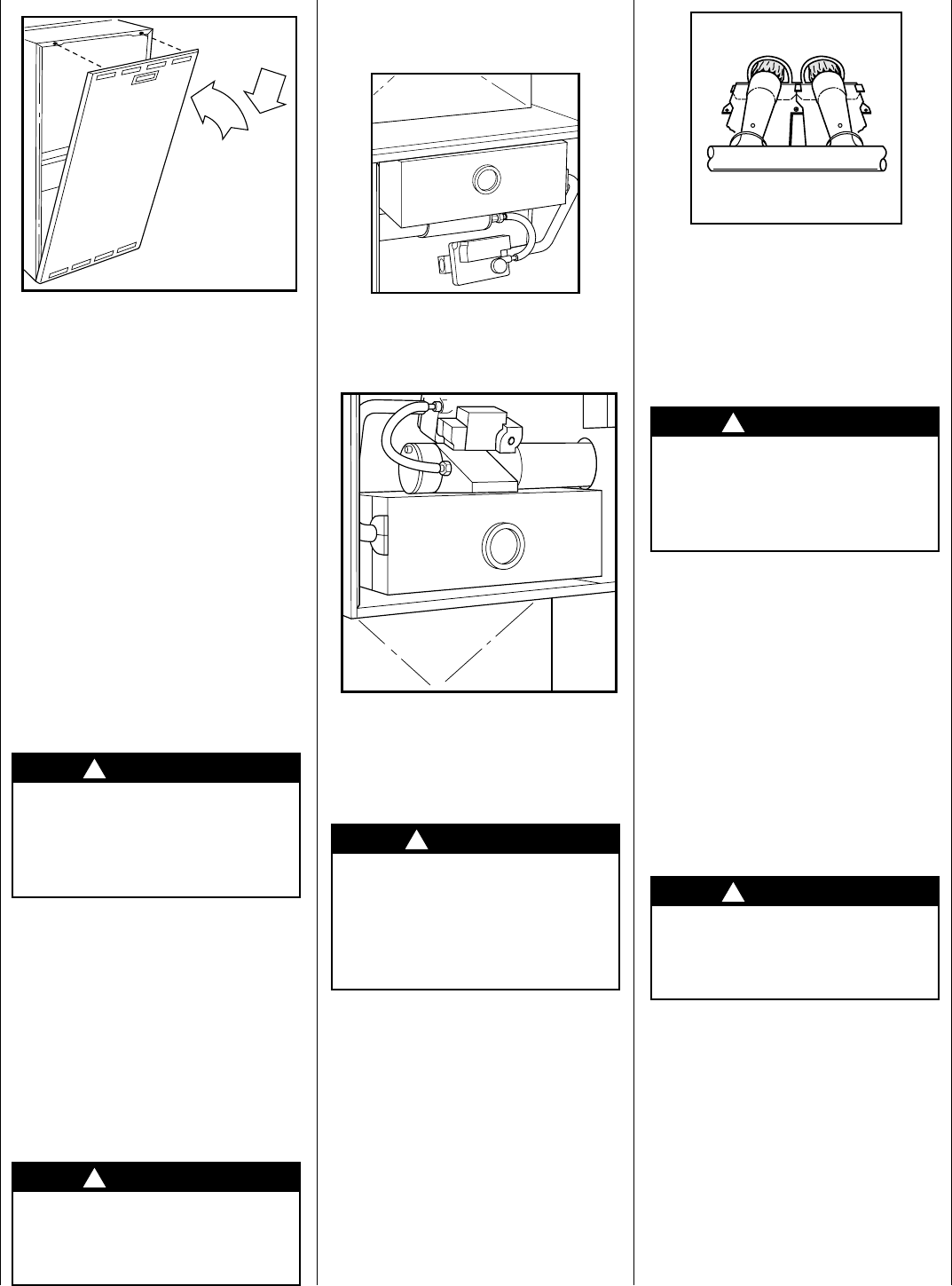
8
28
COMBUSTION AREA
AND VENT SYSTEM
Visually inspect the combustion area
and vent system before each heating
season. Make sure that all PVC pipes
leading into the combustion area and
vent are free from any cracks and sags.
Check the combustion-air intake adja-
cent to the furnace for blockage. Also
check the vent pipe on the outside of
your home for blockage.
When dirt, soot, scale, or rust is
allowed to build up, your furnace can
suffer a loss of efficiency and perform
improperly. Accumulations on the
main burners can result in firing out of
normal sequence. This delayed igni-
tion creates an alarmingly loud sound.
To inspect the combustion area and
vent system, you will need a flashlight.
Refer to Fig. 2, and proceed as follows:
1. Turn off gas and electrical supplies
to the furnace and remove
the main furnace door. (See Fig. 7,
8, and 9.)
2. Remove burner enclosure front.
(See Fig. 29 or 30.)
Inspect the gas burners and ignitor
area for dirt, rust, soot, or scale.
CAUTION
If your furnace makes an espe-
cially loud noise when the
main burners light, shut down
your furnace and call your
dealer.
CAUTION
If dirt, rust, soot, or scale accu-
mulations are found, call your
dealer. Do not operate your
furnace.
!
!
29
30
3. Inspect the combustion-air and
vent pipes for sags, holes, cracks,
or disconnections.
4. Reinstall burner enclosure front.
5. If your furnace is free of the above
conditions, replace main furnace
door and turn on electrical and gas
supplies to your furnace.
(See Fig. 14, 15, and 16.)
6. Start the furnace and observe its
operation. Watch the burner flames
to see if they are clear blue, almost
transparent. (See Fig. 31.) If you
observe a suspected malfunction,
or the burner flames are not clear
blue, call your dealer.
31
HEADING SOUTH
FOR THE WINTER?
DON’T FORGET YOUR
FURNACE!
Since the furnace uses a condensing
heat exchanger, some water will accu-
mulate in the unit as a result of the heat
transfer process. Therefore, once it
has been operated, it cannot be turned
off and left off for an extended period
of time when temperatures will reach
32° F or lower unless winterized. Fol-
low these procedures to winterize your
furnace:
1. Obtain propylene glycol (RV/
swimming pool antifreeze or
equivalent).
2. Turn off electrical supply to the
furnace. (See Fig. 18.)
3. Remove main furnace door.
(See Fig. 21.)
4. Remove upper right inducer hous-
ing drain connection cap.
(See Fig. 32.)
5. Connect field-supplied 1/2-in.
ID tube to upper inducer housing
drain connection.
6. Insert field-supplied funnel into tube.
DANGER
If holes are found in the pipes or
if any portion has become dis-
connected, toxic fumes can es-
cape into your home. DO NOT
OPERATE YOUR FURNACE.
Call your dealer for service.
!
CAUTION
If the furnace is installed in an
unconditioned space where
the ambient temperatures may
be 32°F or lower, freeze protec-
tion measures must be taken.
CAUTION
Do not use ethylene glycol
(Prestone II antifreeze coolant
or equivalent). Failure of plas-
tic components will occur.
!
!



